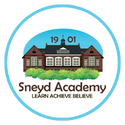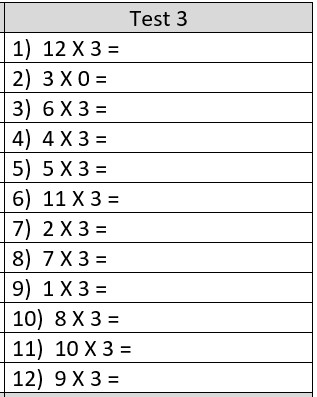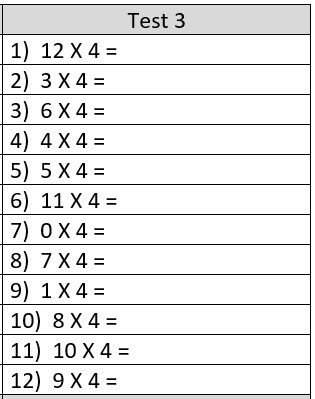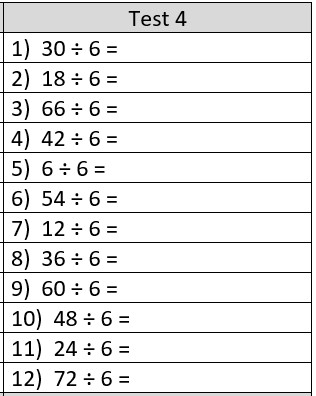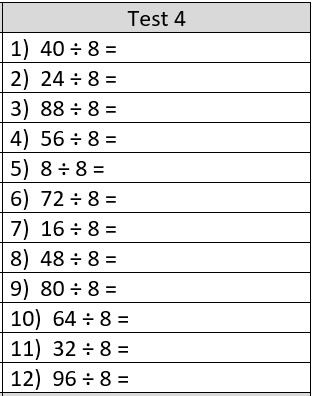Year 3 Mathematics
Curriculum Overview
The mathematics curriculum in Year 3 builds on from the secure understanding of numbers to 100 acquired in Year 2 and extends this fluency and mathematical knowledge to competently using numbers to 1000. Children will be able to count, order and calculate numbers within 1000 using addition and subtraction. Year 3 is the first year group to use column methods of addition, subtraction and multiplication. (See Written Calculation Policies link.) These methods of calculation are still strongly supported by practical resources, particularly Base 10 (See Resources link) so that children get an understanding of place value when moving on to column methods. The column methods in Year 3 are a supportive stepping stone in helping children understand fully the reasons why formal written column methods, which children will progress to in Year 4, actually work.
In Year 3 there is a strong focus on ensuring children know the 3, 4, 6 and 8 times table by heart. All children should be fluent in this knowledge by the end of the year.
Below are the National Curriculum objectives which are covered in Year 3.
Year 3 Statutory Requirements
|
NUMBER – NUMBER & PLACE VALUE
- Count from 0 in multiples of 4, 8, 50 and 100; find 10 or 100 more or less than a given number
- Recognise the place value of each digit in a three-digit number (hundreds, tens, ones)
- Compare and order numbers up to 1000
- Identify, represent and estimate numbers using different representations
- Read and write numbers up to 1000 in numerals and in words
- Solve number problems and practical problems involving these ideas.
|
NUMBER – ADDITION & SUBTRACTION
- Add and subtract numbers mentally, including:
- a three-digit number and ones
- a three-digit number and tens
- a three-digit number and hundreds add and subtract numbers with up to three digits, using formal written methods of columnar addition and subtraction
- Estimate the answer to a calculation and use inverse operations to check answers
- Solve problems, including missing number problems, using number facts, place value, and more complex addition and subtraction.
|
NUMBER – MULTIPLICATION & DIVISION
- Recall and use multiplication and division facts for the 3, 4 and 8 multiplication tables
- Write and calculate mathematical statements for multiplication and division using the multiplication tables that they know, including for two-digit numbers times one-digit numbers, using mental and progressing to formal written methods
- Solve problems, including missing number problems, involving multiplication and division, including positive integer scaling problems and correspondence problems in which objects are connected to objects.
|
NUMBER – FRACTIONS
- Count up and down in tenths; recognise that tenths arise from dividing an object into 10 equal parts and in dividing one-digit numbers or quantities by 10
- Recognise, find and write fractions of a discrete set of objects: unit fractions and non-unit fractions with small denominators
- Recognise and use fractions as numbers: unit fractions and non-unit fractions with small denominators
- Recognise and show, using diagrams, equivalent fractions with small denominators
- Add and subtract fractions with the same denominator within one whole [for example, 5/7+1/7=6/7]
- Compare and order unit fractions, and fractions with the same denominators
- Solve problems that involve all of the above.
|
MEASUREMENT
- Measure, compare, add and subtract: lengths (m/cm/mm); mass (kg/g); volume/capacity (l/ml)
- Measure the perimeter of simple 2-D shapes
- Add and subtract amounts of money to give change, using both £ and p in practical contexts
- Tell and write the time from an analogue clock, including using Roman numerals from I to XII, and 12-hour and 24-hour clocks
- Estimate and read time with increasing accuracy to the nearest minute; record and compare time in terms of seconds, minutes and hours; use vocabulary such as o’clock, a.m./p.m., morning, afternoon, noon and midnight
- Know the number of seconds in a minute and the number of days in each month, year and leap year
- Compare durations of events [for example to calculate the time taken by particular events or tasks].
|
GEOMETRY – PROPERTIES OF SHAPES
- Draw 2-D shapes and make 3-D shapes using modelling materials; recognise 3-D shapes in different orientations and describe them
- Recognise angles as a property of shape or a description of a turn
- Identify right angles, recognise that two right angles make a half-turn, three make three quarters of a turn and four a complete turn; identify whether angles are greater than or less than a right angle
- Identify horizontal and vertical lines and pairs of perpendicular and parallel lines.
|
STATISTICS
- Interpret and present data using bar charts, pictograms and tables
- Solve one-step and two-step questions [for example, ‘How many more?’ and ‘How many fewer?’] using information presented in scaled bar charts and pictograms and tables.
|
White Rose
As an academy we structure the delivery of the national curriculum in the order set out by the White Rose and we use a great many of their resources such as the ‘small steps’ to support this delivery. The timetable shows the order in which units of work are taught. Please click here.
Marvellous Multiplications
The Marvellous Multiplication system is a structured system that we use at Sneyd Academy to support children in learning multiplication tables by heart. The system uses a variety of active teaching techniques alongside regular opportunities to rehearse multiplication tables so children become familiar with all multiplication and division facts for each multiplication table. By the end of Year 3 children are expected to know the multiplication and division facts for the 10, 5, 2, 3, 4, 6 and 8 times tables by heart.
Marvellous Multiplications are tested each week within Big Maths sessions. Examples of tests are below. Children are given 90 seconds to complete each test.

